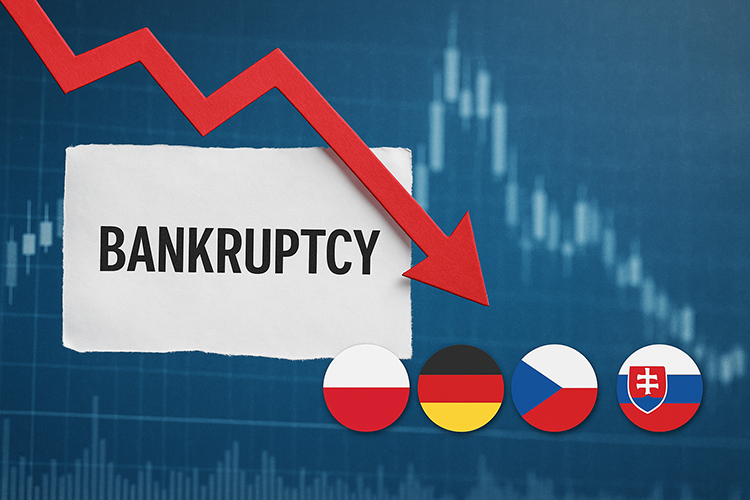2025-09-16
indicators

Bankruptcies among Czech entrepreneurs have risen sharply this year, with 4,265 individuals declaring insolvency from January to August, marking a 15% increase compared to the same period in 2024. According to CRIF – Czech Credit Bureau, the rise translates into 563 more bankruptcies than last year and represents the highest eight-month total since 2021. Over the same period, 4,433 bankruptcy petitions were filed, up 14% year-on-year, as loan repayment morale among entrepreneurs has deteriorated amid faster growth of borrowing than deposits. In August alone, 505 entrepreneurs declared bankruptcy, 72 fewer than in July and the lowest monthly total this year. The regional breakdown shows the Moravian-Silesian Region leading with 560 cases, followed by Central Bohemia with 514 and Prague with 491. The sharpest year-on-year increases were recorded in Central Bohemia, up 29%, and South Bohemia, up 27%, while the smallest growth was in the Hradec Králové Region, up 4%. On a proportional basis, the Ústí Region reported the highest insolvency risk, with 88 bankruptcies per 10,000 entrepreneurs in the past twelve months, compared to a national average of 58. Sectorally, the construction industry remained the most affected, followed by trade and manufacturing. Year-on-year, administrative and support services recorded a 45% rise in bankruptcies, while real estate management grew 32% and accommodation and catering 26%. Information and communication was the only sector to report a decline, down 19%. Transport and storage remained among the riskiest industries, alongside construction and hospitality, where bankruptcy levels have consistently been high. CRIF analysts noted that more than two-thirds of bankrupt entrepreneurs had shown no turnover in the period prior to collapse. The Czech figures fit into a broader regional trend of mounting insolvency pressures. In Poland, more than 3,700 company insolvencies were reported in the first half of 2025, up 17.7% year-on-year, with analysts citing rising costs and tighter financing conditions. In Germany, business insolvencies climbed 12.2% to 12,009 cases in the first half of 2025, while Eurostat data show a 1.7% quarter-on-quarter increase in bankruptcy declarations across the EU in the second quarter of this year. Slovakia and other Central European countries have also recorded rising insolvency filings, reflecting an ongoing normalisation after the pandemic and structural pressures in construction, trade and services. Although direct comparisons between countries are complicated by different reporting methodologies – some tracking corporate bankruptcies and restructurings, others including sole traders – the directional trend is clear. Across Central Europe, insolvency risks are rising, with vulnerable sectors under strain and regional economies adjusting to higher costs, tighter credit, and uneven demand. For the Czech Republic, the third consecutive annual increase in entrepreneur bankruptcies highlights a fragile business environment that, while not yet at the levels of 2020 and 2021, continues to challenge the stability of small enterprises and the self-employed.

